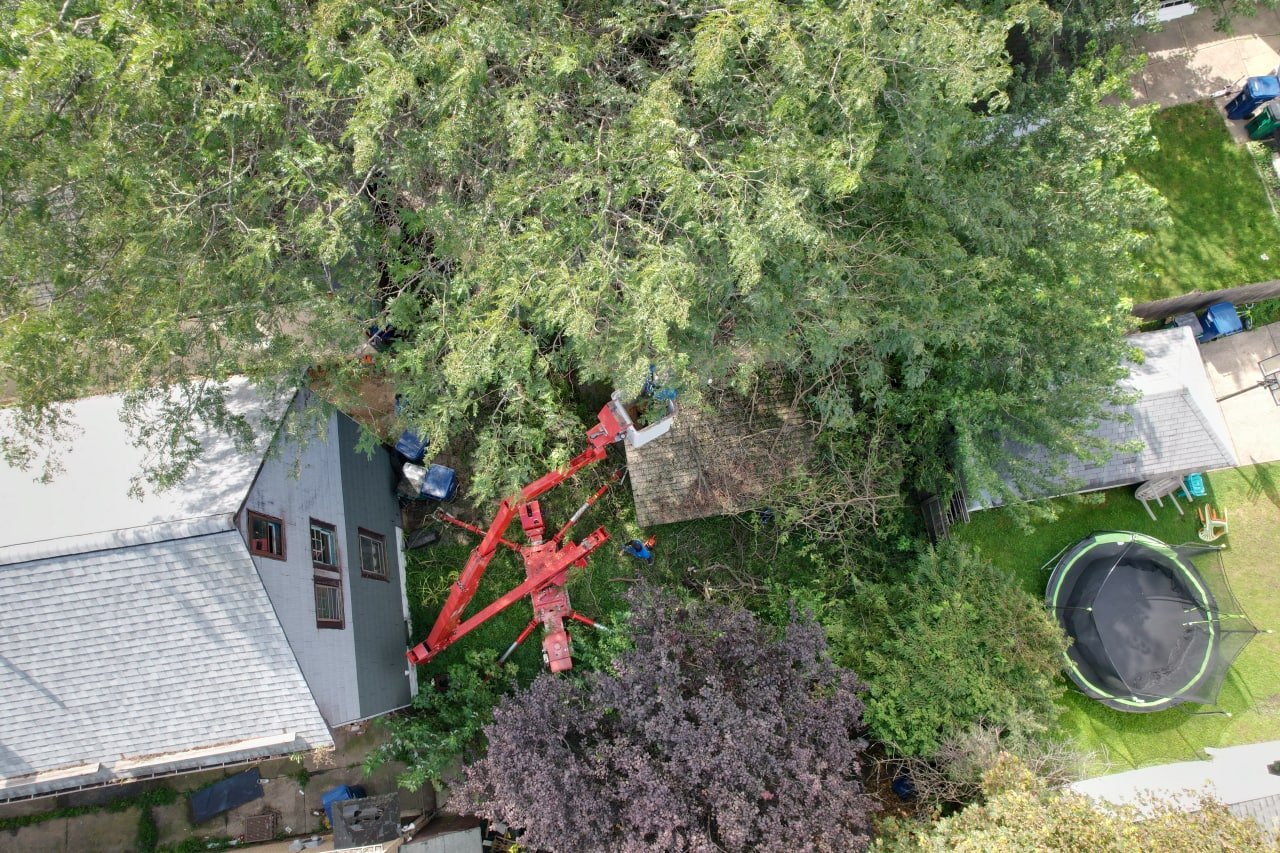When picking up a trimming saw and eyeing up a tree in need of grooming, a host of questions begins running through our minds –
- Cut this limb?
- What about the other one?
- Is this the right time for a Rochester tree trimming service?
- What if I cut too many branches?
Proper tree trimming is part science and part art. Once you know a little science behind it, you can trust your eye for the artistic elements of trimming.
So, take a deep breath and get set to learn a little science about tree trimming.
| TREE TRIMMING SAFETY
Remember, tree trimming is not child’s play. 72 of the 129 tree work-related accidents reported in 2017 were fatal. So, approach every trimming task by assessing the need for professional tree trimming experts. |
What Is The Best Time To Trim Trees?
The best time to trim deciduous trees is in late fall after the trees shed their leaves. The fallen tree leaves allow you to see the tree’s structure clearly. You can also trim deciduous trees in early winter. Evergreen trees should be lightly trimmed in late winter.
You must avoid major trimming during “maple sugar time”. That is from January through March.
Beetles that invade oak trees are active from late spring through midsummer. If your region has wilt oak, avoid tree trimming your oats during this period.
Trim away diseased or dead branches whenever you notice them. Waiting until fall or winter to cut these branches can cause further damage or infection.
| PRO TIP – While tree trimming diseased branches, dip the trimming blade in a 10% bleach solution between each cut. This will avoid spreading the disease. |
Tools Needed For The Tree Trimming Job
The thickness of the branch dictates tool selection. Small branches that are less than 1 inch in diameter can be easily trimmed with handheld bypass pruners or loppers.
For medium-sized branches (between 1-4 inches), you will need a sharp pruning saw. The perfect tool for removing branches that are 3-4 inches in diameter or larger is a chainsaw.
In addition to these tree trimming tools, don’t forget the following safety gear –
- Work gloves
- Safety glass
- Hard hat
- Chainsaw chaps
- Hearing protection
- Non-slip work shoes or boots
- Long sleeve shirt and long pants
Steps To Safely Remove Tree Branches
The larger the branch diameter of the tree to be trimmed, the more difficult it will be for the tree to heal over. There will be more surface area exposed to insect infestation and infection.
Not only that, but larger tree branches hold proportionally more foliage than small ones. So, trimming them off has a greater impact on the tree’s energy production (healing) rate. Simply put, increased size brings more increased risk and less margin for error.
Your ultimate goal should be to make a smooth and clean tree trimming cut that will heal as quickly as possible. You can make that cut in just three steps.
Step 1 –The Initial Cut
Make the notch (initial cut) about 2 feet out from the tree trunk. Start on the underside of the branch and cut upwards a quarter of the way through the branch. This will create the notch.
This initial cut severs the bark and tree’s outer growth rings. It prevents the branch from splitting and falling when the next cut is made.
Step 2 – Relief Cut
After making the notch cut, move on to the next cut – the relief cut. The relief cut relieves most of the downward pressure made by the weight of the tree branch.
To make the relief cut, begin on the upper side of the branch – a couple of inches past the notch. Then, cut completely through the tree branch. Now, you will be left only with a short section of the branch sticking out from the trunk.
Step 3 – Final Cut
The final cut will completely remove the remaining branch base from the trunk. To make the final cut, locate the branch collar. It is the swollen area with rough bark that surrounds the connecting point of the branch and trunk.
Place the cut across the top of the branch collar. Make sure to follow the angle of the collar. Avoid trimming into the branch collar. Or else you will kill the callus it provides to heal the trimming cuts.
Tips To Trim High Branches
It is best to hire a professional tree service in rochester ny or rent a bucket lift to remove high branches. Bucket lifts provide a safe, secure working platform that you can easily move into position.
With it, you can safely remove large branches as numerous smaller and lighter pieces – instead of just a few large and heavy pieces.
Consider these safety tips while tree trimming high branches:
- If possible, trim from the ground. Use a pole chainsaw for extended reach.
- Never carry a running chainsaw while climbing up a tree with a ladder. Instead, use a rope to haul up the chainsaw. Then, get into a secure position before starting the chainsaw.
- If the tree canopy is touching power lines, call a professional.
- Before climbing up the tree, consider where the trimmed branches will fall. Make sure that area is clear of people, pets, cars, and structures that may get injured or damaged.
- Also, keep in mind that heavy branches that drop through a tree’s canopy cause damage to adjacent branches as they fall.
- A heavy branch viewed from the ground may look manageable until you climb the tree. Don’t be shy to stop and call an expert if the tree trimming job turns out to be more than you bargained for.
Need Help Trimming Your Large Tree?
Then, get expert tree trimming Rochester NY services from Branch Specialists. Our professional tree trimmers can eliminate or minimize defects without hindering your tree’s growth. We can aesthetically shape your tree to enhance the beauty and health of your trees.
Connect with us to get a free price estimate for our tree trimming services!

